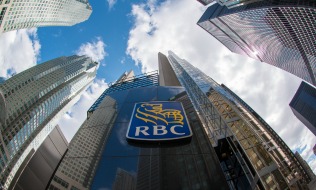

The Royal Bank of Canada in enhancing its employee resource groups this year following a comprehensive impact assessment of the program for the first time.
The organization’s employee resource groups —including women, aboriginals, people with disabilities, visible minorities, newcomers and lesbian, gay and transgender employees — have been in place for many years in Canada, the United States and Britain. The first Canadian group began in 1990, and today more than 17,000 employees around the world are members of these groups.
“These aren’t just little groups that just connect for coffee; they are very vibrant, very active,” says Norma Tombari, senior director of global diversity and inclusion at RBC.
“One of the things we were looking at as we assess our initiatives and the investment of time is . . . [employee resource groups] are growing, we provide a bit of funding to help sustain them, they organize a lot of activities. We want them to create a sense of inclusion, to help in terms of professional development. But at the end of the day, are they actually achieving the objectives?”
Read: Accenture makes ‘bold move’ in publishing diversity stats
In May 2016, along with 90 other organizations across North America, RBC participated in the U.S.-based Center for Effective Organizations’ third annual research into employee resource groups. “It has an impact model that looks at talent management, culture, corporate vitality or performance and a cross-section that looks at these three elements and how it impacts the individual, the company and external stakeholders,” says Tombari.
RBC is still reviewing its results but it did learn the organization’s groups are above the benchmarks in terms of meeting its goals and objectives and that there’s a high level of confidence in the leadership of the organization and its employee resource groups.
“It’s fascinating to see that it is creating a difference, that [employee resource groups] are creating that sense of community, they are meeting the goal of enhancing leadership capabilities and giving employees a sense of stronger engagement with the organization,” says Tombari.
Read: What is the key to boosting gender equality at work?
In 2016, RBC also launched a virtual event series that showcases inspirational career journeys of its employees from diverse backgrounds. To date, it has highlighted aboriginal peoples, people with disabilities and lesbian, gay and transgender employees. The diversity recruitment team is currently preparing for a newcomers series that will begin in October.
Another new development around diversity and inclusion for 2016 is the introduction of an option for people to identify themselves as a member of the lesbian, gay and transgender community during recruitment. “Being a federally regulated organization, in terms of our self-identification codes, the four groups that are targeted are women, minorities, persons with disabilities and aboriginal people,” says Tombari.
“We want to be inclusive of everyone, whether you’re applying to the organization or you work for the organization, that you feel recognized as an important element. So we are adding the self-identifier as LGBTQ in our online recruitment tool, as well as internally, in our workforce census. It’s about three years now that we’ve already been asking that identifier in our employee opinion survey.”
Read: One-third of Canadians don’t see their work as LGBTQ inclusive: study
RBC also introduced an expanded cohort to its Diversity Dialogues mentoring program in 2016 to include lesbian, gay and transgender employees. The program, a talent management effort that has had more than 1,600 employee participants since its launch, brings together a range of candidates such as women, visible minority employees, people with disabilities, aboriginals and lesbian, gay and transgender employees with senior leaders possessing a range of professional experiences and backgrounds.
The changes follow the bank’s recently published Diversity and Inclusion Blueprint 2020, the third version since 2009. “I think it speaks volumes in terms of the organizational commitment, global impact, the importance [diversity and inclusion] have for supporting the purpose, vision and values of the organization,” says Tombari. “And something that I would suggest employees and leaders rally around in very tangible ways.”
